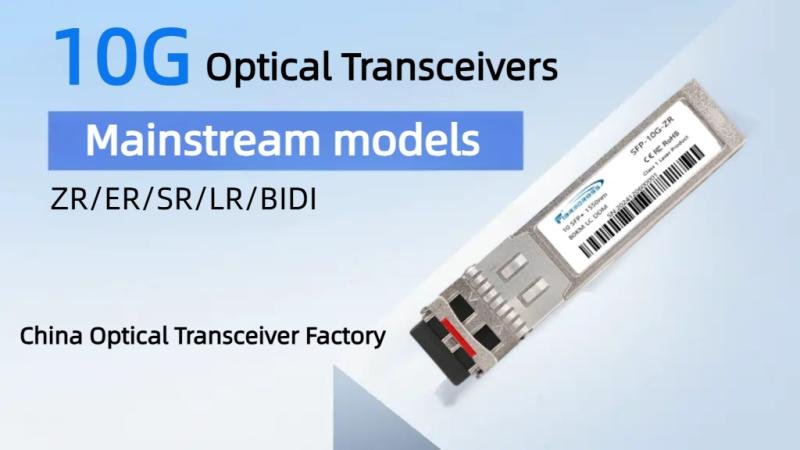The relentless growth of data traffic-driven by cloud computing, video streaming, and IoT-has placed unprecedented demands on network infrastructure. At the heart of this evolution lies the 10G optical transceiver: a compact, high-performance module that converts electrical signals into optical pulses and back, enabling ultra-fast, reliable data transmission over fiber-optic networks. This article explores the role of 10G optical transceivers in modern telecommunications, their technical specifications, deployment scenarios, and the benefits they deliver to network operators and enterprise data centers.
What Is a 10G Optical Transceiver?
A 10G optical transceiver is a pluggable module that supports data rates up to 10 Gbps. It interfaces with networking equipment-such as switches, routers, and servers-via standardized electrical connectors (commonly SFP+), and connects to fiber-optic cables through LC, SC, or MPO interfaces. Key functions include:
Learn more at https://fibrecross.com/10g-Optical-transceiver/.
Electrical-to-optical conversion: Transmit (TX) laser diodes modulate electrical input into light pulses.
Optical-to-electrical conversion: Receive (RX) photodiodes detect incoming light pulses and convert them into electrical signals.
Digital diagnostics: Many 10G modules support Digital Optical Monitoring (DOM) to report parameters like temperature, optical power, and voltage in real time.
These modules adhere to industry standards (e.g., IEEE 802.3ae, SFF-8431) to ensure interoperability across equipment vendors.
Applications in Telecommunications
Metro and Access Networks
Carrier Ethernet: Extending Ethernet services over metropolitan areas, leveraging the cost-effectiveness of 10G transceivers.
Fiber to the x (FTTx): Enabling high-speed last-mile connections for enterprises and residential customers.
Data Center Interconnect (DCI)
Server-to-switch links: Low-latency, high-throughput connections within racks.
Switch-to-switch uplinks: Aggregation layers that support leaf-spine topologies at 10G per link.
Mobile Backhaul
5G fronthaul/backhaul: Supporting massive data traffic between cell sites and central offices.
Small cell deployments: Cost-effective fiber links for dense urban coverage.
Enterprise Networks
Campus LAN: Upgrading legacy 1G links to 10G for bandwidth-intensive applications like video conferencing and virtualization.
Storage Area Networks (SAN): Fibre Channel over Ethernet (FCoE) deployments benefiting from 10G speeds.
Key Benefits for Network Operators
Scalability
Easily upgrade from 1G to 10G by swapping pluggable modules-no forklift upgrades required.
Cost Efficiency
Reduced power consumption and smaller footprint compared to older XFP modules, translating to lower operational expenses.
Flexibility
A range of wavelength and distance options allows operators to tailor deployments to multi-mode or single-mode fiber infrastructures.
Reliability
Mature technology with extensive vendor support, delivering consistent performance in harsh environments.
Diagnostic Visibility
Real-time monitoring of transceiver health (DOM) enables proactive maintenance and minimizes downtime.
Deployment Best Practices
Match Transceiver and Fiber
Verify that the module’s wavelength and fiber type (OM3/OM4 multimode vs. OS1/OS2 single-mode) align with link distance requirements.
Ensure Clean Connections
Use fiber-optic cleaning tools to prevent signal loss from dust or debris on connectors.
Monitor DOM Metrics
Integrate transceiver diagnostics into network management systems to track optical power, temperature, and voltage trends.
Test Link Budget
Account for fiber attenuation, connector loss, and aging factors to confirm margins before commissioning.
Plan for Future Growth
Consider modular platforms that support hot-swappable transceivers to facilitate incremental bandwidth upgrades.
Looking Ahead: Beyond 10G
While 10G optical transceivers remain the workhorse of many networks, emerging applications-such as AI-driven analytics and ultra-high-definition streaming-are driving adoption of 25G, 40G, and 100G modules. Nonetheless, 10G will continue to play a critical role in access networks, enterprise LANs, and cost-sensitive segments for years to come.
Conclusion
As telecommunications networks evolve to meet ever-increasing data demands, the 10G optical transceiver stands as a proven, cost-effective solution for delivering high-speed connectivity. By understanding their technical capabilities, deployment considerations, and strategic benefits, network planners can confidently architect resilient, scalable infrastructures.
Fibrecross specializes in high-quality 10G SFP+ optical-transceiver designed for seamless integration into diverse telecommunication environments-built for performance, built for trust. Learn more at http://www.fibrecross.com.
Fibrecross
No. 18, Canglangqiao Road, Hengfeng Street, Wenling City, Taizhou City, Zhejiang Province 317520
Emai:zhipianren@fibrecross.com Tel:+86 18968543929
Enzo
Fibrecross is a trusted fiber optic solution provider & optical transceiver manufacturer serving data centers, telecom, and enterprise networks worldwide. We deliver high-quality, high-speed product backed by strong R&D, global certifications, and tailored OEM/ODM support-built for performance, built for trust.
This release was published on openPR.


















